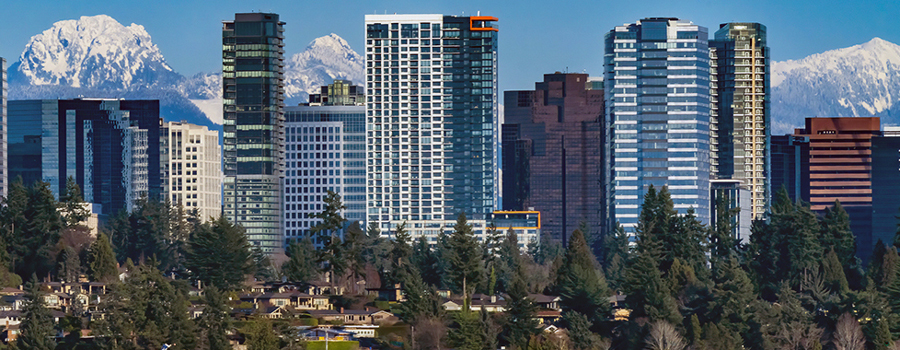Potential users

Sewer heat recovery (SHR) reduces a building’s energy demand and carbon intensity, and helps building owners leverage occupancy strategies to promote sustainable practices that attract tenants, buyers, and investors. Owners can further benefit from this renewable energy source as it could contribute to green building certification ratings and help meet stringent energy codes.
- Do your project plans include sustainable building practices and climate action goals?
- Are you a commercial property owner or developer with buildings near a Wastewater Treatment Division (WTD) interceptor pipe?
- Does your building use a hydronic system for heating or cooling or have significant domestic hot water requirements?
If yes, your project may be a good candidate for SHR technology. This visual demonstrates a Potential User’s journey to King County SHR.
TWO PROJECT SPACES AVAILABLE. ACCEPTING APPLICATIONS NOW.
Follow the application instructions on this page. Refer to the FAQ document for additional information. All applications are reviewed on a first-come, first-served basis. The program remains open until final project slot is filled.
NOTE: Application submission does not imply approval. Applicants will be notified regarding status.
Selection process
- A Potential User must have a project (new construction or retrofit) located within WTD’s service area or with access to King County sewer pipes. View the County sewer interceptor map HERE.
- Potential Users must demonstrate their project’s readiness to be considered a candidate for WTD’s Sewer Heat Recovery Program. Readiness is defined as 30% overall project design completion or greater.
- If more than one project passes the readiness review phase, WTD will select the project that represents the most diversified portfolio of projects.
- Project diversity measures may include retrofit vs. new construction, standalone buildings vs. energy district, square footage, projected energy demand, and building use type.
NOTE:
- In the event multiple projects meet the selection criteria equally, projects demonstrating the greatest positive impact toward equity and social justice will be prioritized.
- Submission process will remain open and applications thereafter will be considered on a first-come, first-served basis.
- King County Equity and Social Justice strategic priorities can be found HERE.
FAQ
Application process
-
Review standard design guidelines
These design guidelines will assist you in evaluating whether or not your project is ready for sewer heat recovery technology. Please reference WTD's Standard Design Guidelines.
-
Review sale and use of thermal energy agreement
If you are selected as a potential user, you will need to sign a use-agreement in order to proceed. Please reference the use-agreement to ensure you're able to meet all of the terms.
-
Complete a Sewer Heat Recovery Application Checklist
Complete a Sewer Heat Recovery Application and prepare checklist documents.
-
Submit application
Email application packet to Drew.Thompson@kingcounty.gov.
If you wish to submit a hard copy packet or another form of submittal, please contact Drew.Thompson@kingcounty.gov to arrange accommodations.
The WTD Sewer Heat Recovery Program was authorized by the King County Council in September 2020.
Detailed requirements are outlined in the terms of the template user-agreement HERE.
The following is a summary of what to expect:
- Assess suitability for Sewer Heat Recovery.
- Review and comply with WTD’s Standard Design Guidelines.
- Sign user-agreement (Official title: Agreement for Sale and Use of Thermal Energy from King County Wastewater)
- Bear all costs and risks associated with the project.
- Ensure readiness.
- Submit designs to WTD.
- Schedule construction that will not impact the wastewater conveyance system.
- Construction of the connection and energy transfer system paid at prevailing wage rates.
- Allow WTD to install a metering related sensors, telecom device, and secure enclosure on the User’s property.
- Pay WTD annual Energy Transfer Fee (waived for first 3 years of agreement).
- Provide WTD cost, revenue, energy use, and carbon emission data for the first 3 years of the agreement.

 Translate
Translate